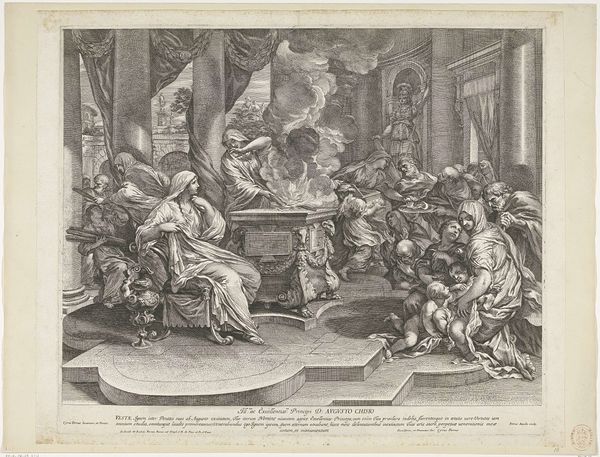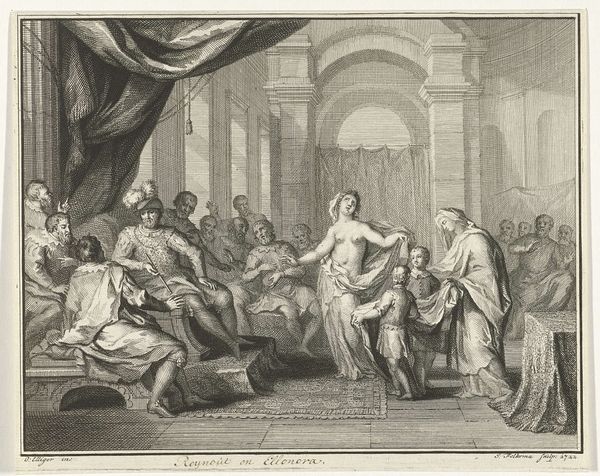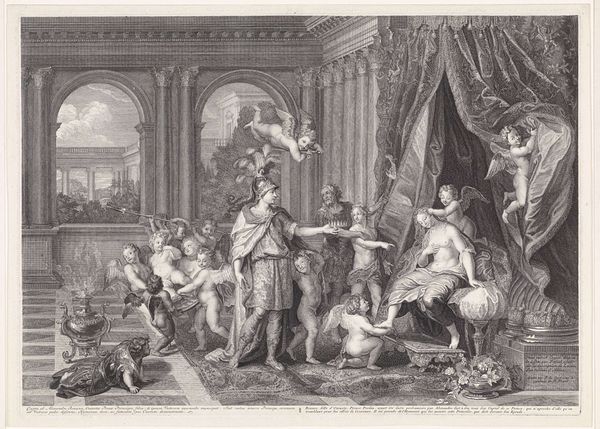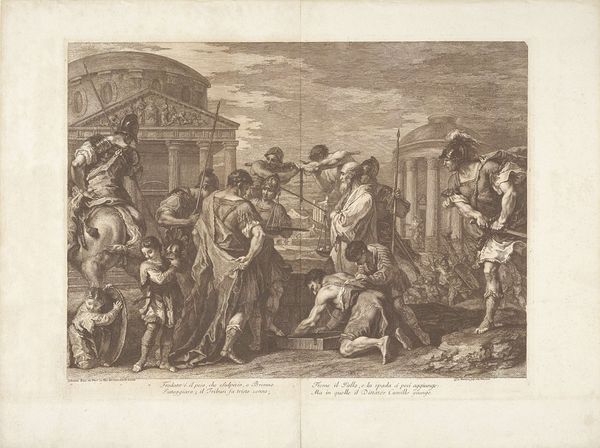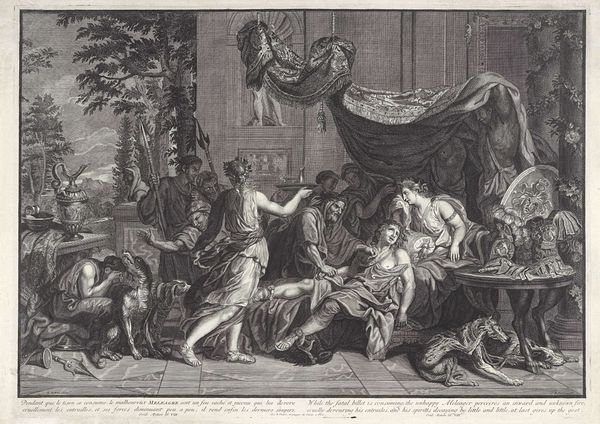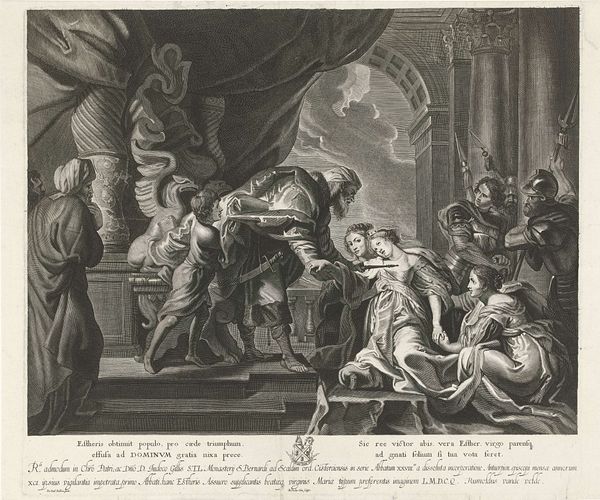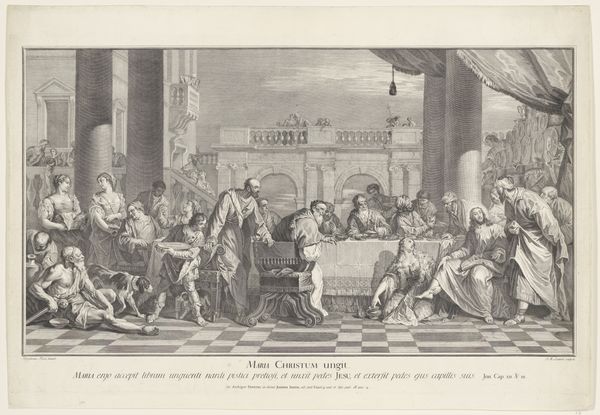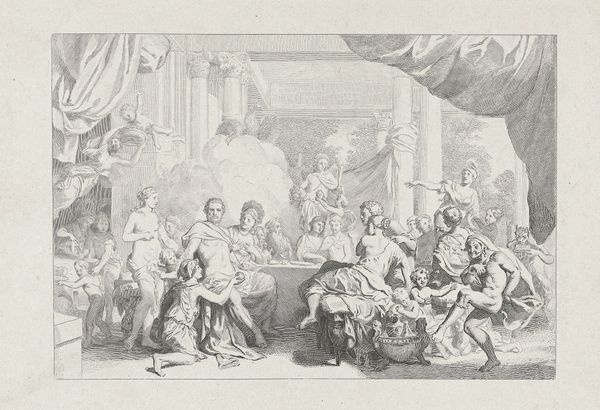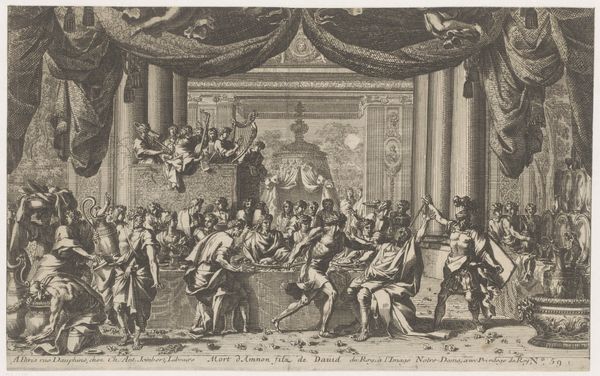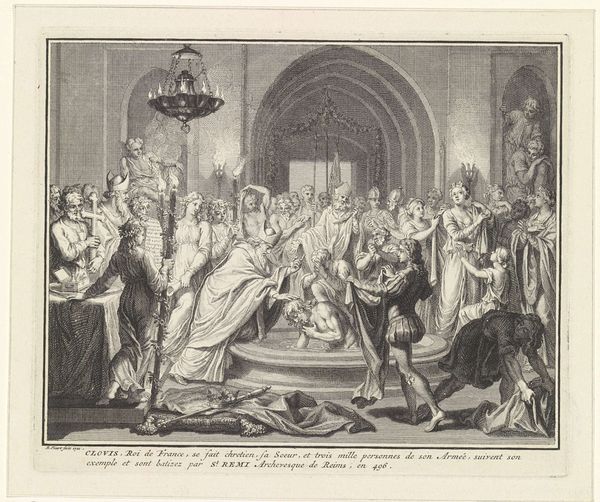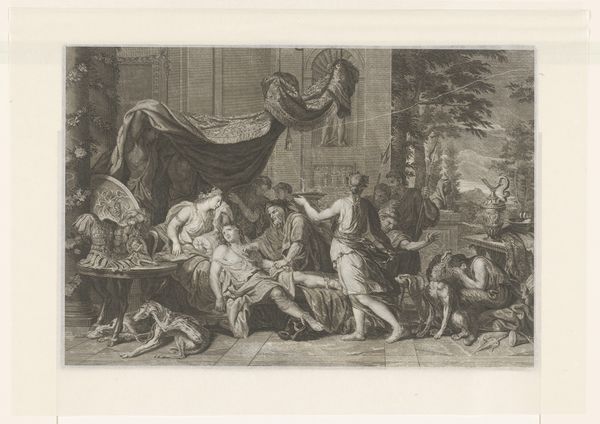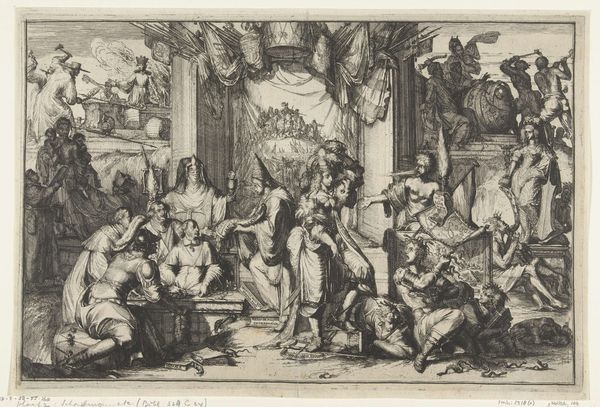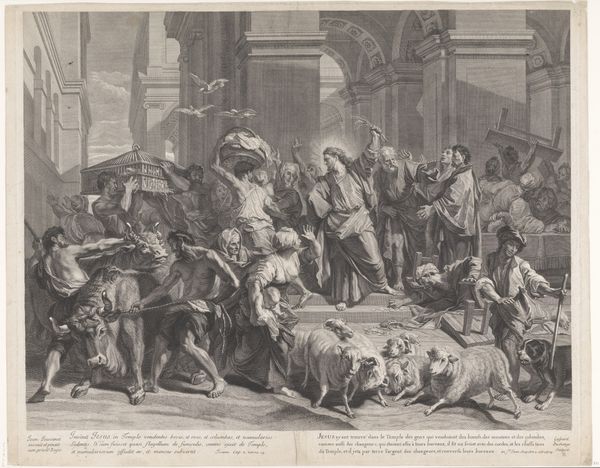
print, engraving
#
baroque
# print
#
figuration
#
history-painting
#
engraving
Dimensions: height 597 mm, width 831 mm
Copyright: Rijks Museum: Open Domain
Curator: Today, we’re looking at “Christus in het huis van Simon de Farizeeër,” or “Christ in the House of Simon the Pharisee,” an engraving made after 1705, currently held at the Rijksmuseum. The engraver is Gaspard Duchange. Editor: My immediate reaction is to the tension, the energy bubbling beneath the surface of this grand scene. It's all stark contrast, dramatic poses – very Baroque. Curator: Duchange captures the scene’s emotional complexities masterfully. Note how the composition guides our eyes: the architecture providing structure and depth, the light falling dramatically to highlight specific figures. Observe how the diagonal lines lead to Christ, emphasizing his central role in the narrative. Editor: Absolutely. The narrative, for me, is inseparable from questions of social hierarchy. Who is allowed at this table, and who is deemed worthy of Christ’s compassion? Notice the woman kneeling and weeping, a symbol of repentance perhaps, or a challenge to the established social order, given the patriarchal structures. It’s compelling to consider who’s excluded. Curator: And what of the expressions? Look closely at Simon the Pharisee; see his disdain juxtaposed against the woman’s raw vulnerability. Semiotically, those reactions reveal a great deal about prevailing attitudes regarding piety, sin, and forgiveness at the time. Editor: It begs the question of how "sin" is defined and by whom. This woman’s visible grief contrasts with the subtle disdain of the seated figures; such contrasting behaviors demonstrate the policing of women's emotions and their relegation to roles of either virtue or fallenness. The piece functions as a tableau of complex class dynamics, doesn't it? Even Christ seems a touch detached, his gesture... what exactly does it signify? Curator: An appeal for empathy? For broader inclusion? The print, by being widely reproducible, extends that invitation to viewers beyond Simon's home, facilitating the debate through visual discourse. Editor: Perhaps Duchange encourages questioning what's kept out of the frame, culturally. Ultimately, its success is in generating ongoing interrogation about piety, judgement, and social hierarchies. Curator: For me, this exploration really solidified the impact the stylistic choices made, drawing the viewers’ eye to create an aesthetic, moral and cultural focal point. Editor: And that's why thinking about its historical context amplifies its contemporary relevance, and ultimately enriches our interpretation of the work.
Comments
No comments
Be the first to comment and join the conversation on the ultimate creative platform.
